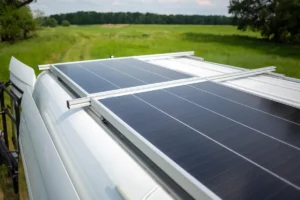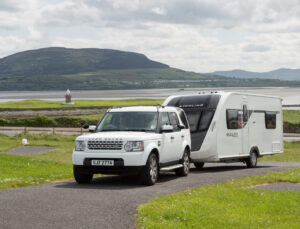Introduction: Importance of a good caravan battery.
Caravan batteries are the lifeblood of any mobile home or recreational vehicle. They power everything from lights and appliances to the vehicle’s starter and ignition systems. Without a reliable battery, a caravan can quickly become uninhabitable, especially in remote areas where access to power sources might be limited. A good caravan battery ensures that you can enjoy your journey without the constant worry of running out of power, allowing for a more comfortable and stress-free experience.
Moreover, the right caravan battery can save you money in the long run. Investing in a high-quality battery means fewer replacements and reduced risk of damage to your caravan’s electrical systems. It also ensures that all devices and appliances run efficiently, preventing potential overloads or malfunctions. In essence, a good caravan battery is not just a power source; it’s an investment in safety, comfort, and peace of mind.

Different types of caravan batteries and their applications.
Caravan batteries come in various types, each designed for specific applications and needs. The most common types include starter batteries, leisure batteries, and lithium batteries. Starter batteries are designed to provide a short, high-power burst to start the engine and are not suitable for long-term power supply. Leisure batteries, on the other hand, are designed to release energy slowly over a prolonged period, making them ideal for powering appliances and devices in the caravan.
Lithium batteries are a newer addition to the caravan battery market. They are lightweight, have a high energy density, and can be discharged and recharged many times without losing capacity. This makes them perfect for caravans that require a lot of power, especially those with solar setups. Each battery type has its advantages and disadvantages, so it’s essential to choose the one that best fits your caravan’s needs and usage patterns.

Advancements in battery technology and their impact on caravan batteries.
The world of battery technology has seen significant advancements in recent years. These innovations have led to the development of batteries that are more efficient, longer-lasting, and environmentally friendly. For instance, the introduction of lithium-ion and lithium iron phosphate batteries has revolutionized the caravan industry. These batteries offer a higher energy density, which means they can store more power in a smaller space, making them ideal for caravans where space is at a premium.
Furthermore, these advancements have also led to the creation of smart batteries equipped with built-in monitoring systems. These systems can provide real-time data on the battery’s health, charge level, and potential issues, allowing for proactive maintenance and ensuring the battery’s longevity. As technology continues to evolve, we can expect even more efficient and sustainable solutions for caravan power needs, enhancing the overall caravaning experience.
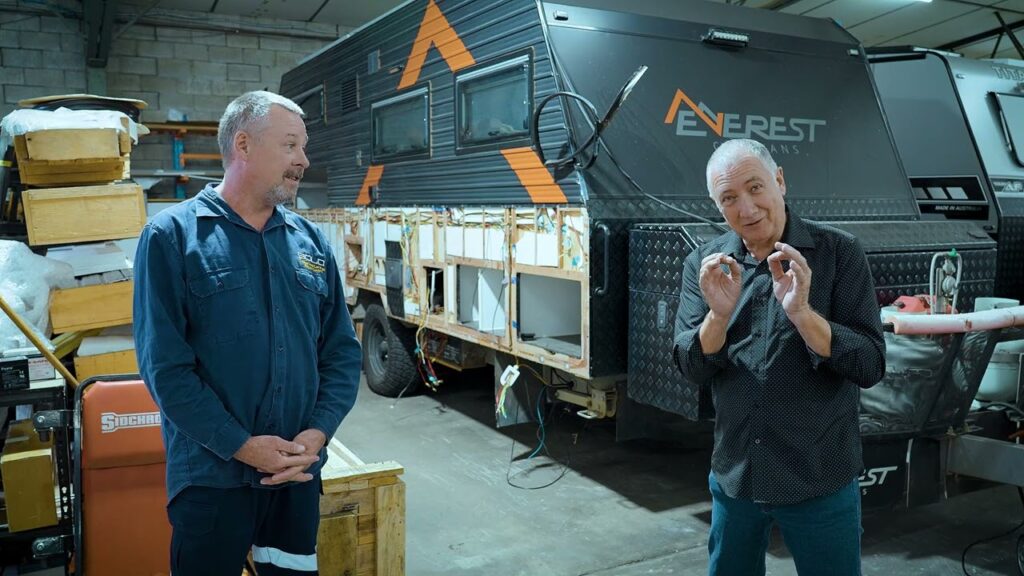
How to determine the right battery size for your caravan.
Choosing the right battery size for your caravan is crucial to ensure you have enough power for all your needs without overburdening the system. The size of a caravan battery is typically measured in amp-hours (Ah), which indicates the amount of current the battery can supply over a specific period. To determine the right size, you need to calculate your caravan’s daily power consumption. This involves listing all electrical devices and appliances, estimating their daily usage in hours, and then multiplying by their power rating in watts.
Once you have the total daily consumption in watt-hours, you can convert this to amp-hours by dividing by the voltage of your system (usually 12V for caravans). This will give you an estimate of the battery capacity you need. It’s always a good idea to add a buffer of around 20-30% to account for unexpected power needs or inefficiencies. By ensuring you have the right battery size, you can avoid the pitfalls of frequent discharging and recharging, which can reduce the battery’s lifespan.
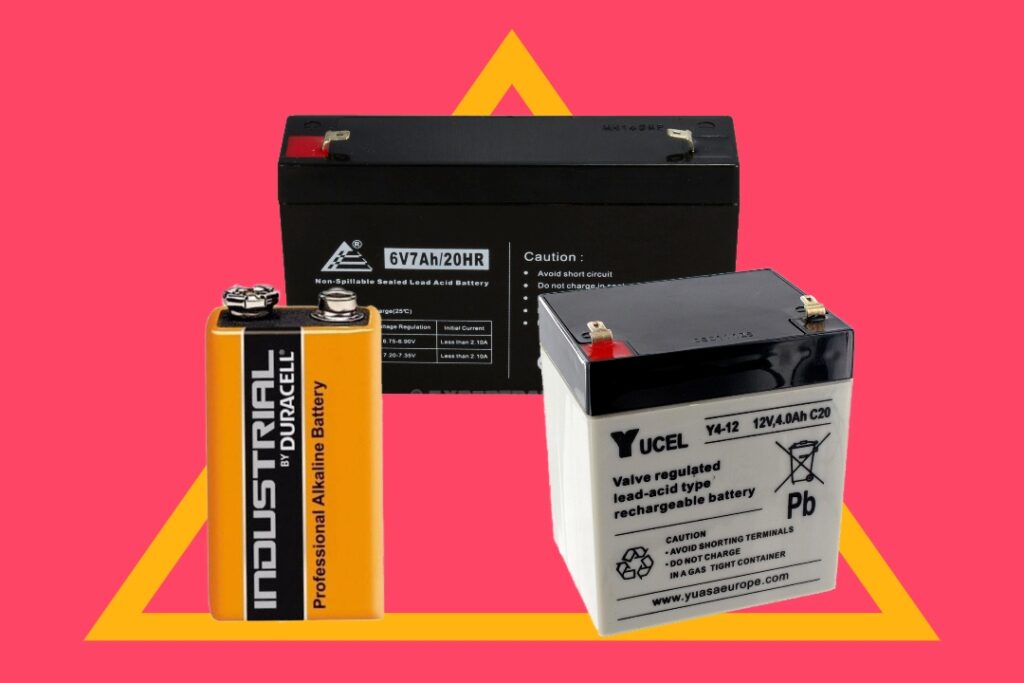
The environmental impact of different battery types.
The environmental footprint of a battery is determined by various factors, including its manufacturing process, lifespan, and disposal methods. Traditional lead-acid batteries, for instance, contain harmful chemicals and heavy metals that can be detrimental to the environment if not disposed of correctly. Moreover, the production of these batteries often involves energy-intensive processes, contributing to carbon emissions.
On the other hand, lithium batteries, while more energy-efficient and longer-lasting, come with their own set of environmental concerns. The mining of lithium and other rare metals required for these batteries can lead to habitat destruction and water pollution. However, advancements in recycling technologies are making it easier to reclaim and reuse materials from old batteries, reducing the need for new raw materials. As consumers, it’s essential to be aware of the environmental impact of our choices and opt for batteries from manufacturers that prioritize sustainable practices. Proper disposal and recycling of old batteries also play a crucial role in minimizing their environmental footprint.
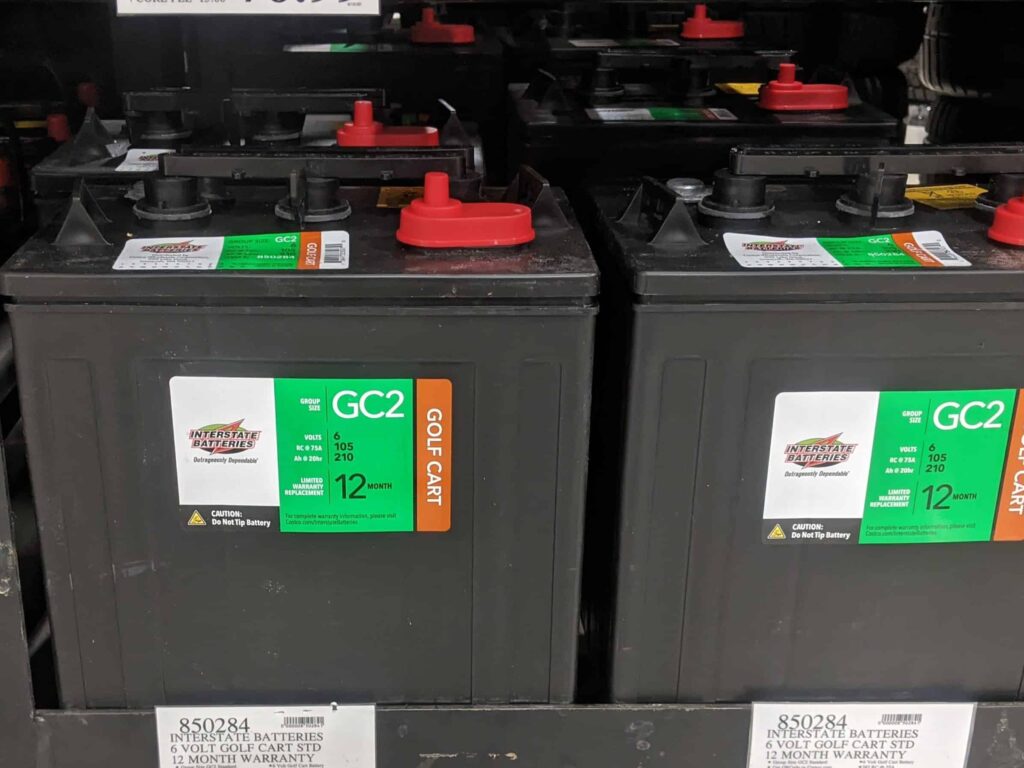
Safety precautions when handling and installing caravan batteries.
Caravan batteries, like all batteries, store a significant amount of energy, and mishandling them can lead to dangerous situations. It’s essential to always wear protective gloves and eyewear when working with batteries to protect against acid spills or splashes. Ensure the area is well-ventilated, especially when dealing with lead-acid batteries, which can release harmful gases.
When installing a new battery, always connect the positive terminal first, followed by the negative to prevent short circuits. Ensure that all connections are tight and secure to prevent sparks or loose wires. Regularly inspect the battery for any signs of damage, corrosion, or leaks. If you notice any of these signs, it’s time to replace the battery. By following these safety precautions, you can ensure a safe and efficient power source for your caravan.
Tips for extending the lifespan of your caravan battery.
The lifespan of a caravan battery depends on its type, usage, and maintenance. To maximize its life, it’s crucial to avoid deep discharges. Regularly draining a battery to a very low state can significantly reduce its lifespan. Instead, try to keep it charged between 50% to 80% for optimal performance. Using a high-quality battery charger that’s suited for your battery type can also make a difference. These chargers can provide a steady and regulated charge, ensuring the battery is neither undercharged nor overcharged.
Regular maintenance is also key. For flooded lead-acid batteries, this means checking the electrolyte levels and topping up with distilled water when necessary. For all battery types, cleaning the terminals to prevent corrosion and ensuring secure connections can go a long way in prolonging battery life. By taking these proactive steps, you can ensure that your caravan battery serves you efficiently for many years.
Warning signs of a failing caravan battery.
A failing caravan battery can lead to a host of issues, from simple inconveniences to potential safety hazards. One of the most common signs of a failing battery is a slow or struggling engine start. If your caravan’s lights are dimming or flickering, or if appliances are not running efficiently, it might indicate a battery issue. Another sign is a swollen or bloated battery case, which can result from overcharging or excessive heat.
Strange or bad odors, like a rotten egg smell, can indicate a leaking battery, which can release harmful gases. Additionally, if you notice any corrosion or buildup around the battery terminals, it’s a sign that the battery needs attention. Regularly checking and being aware of these warning signs can help you address battery issues before they become severe, ensuring the safety and efficiency of your caravan.
How to properly dispose of old caravan batteries.
Disposing of old caravan batteries responsibly is crucial for the environment. These batteries contain harmful chemicals and heavy metals that can contaminate soil and water if not handled correctly. It’s essential never to throw old batteries in the regular trash or landfill. Instead, take them to a designated recycling center or battery collection point. Many retailers that sell batteries also offer recycling services, making it convenient to drop off your old battery when purchasing a new one.
In some regions, there are regulations and incentives in place to encourage battery recycling. By following these guidelines, not only are you protecting the environment, but you’re also ensuring that valuable materials from the batteries are reclaimed and reused, reducing the need for new raw materials. Proper disposal is a small step with significant positive implications for our planet.
The future of caravan batteries: What to expect in the coming years.
The caravan industry, like many others, is undergoing rapid technological advancements. As the demand for more efficient and sustainable power sources grows, we can expect significant innovations in caravan battery technology. Lithium-ion and lithium iron phosphate batteries, which are already making waves in the industry, will likely become even more prevalent due to their high energy density and long lifespan. We might also see the rise of solid-state batteries, which promise even greater energy storage capacities and faster charging times.
Moreover, as renewable energy sources like solar and wind become more accessible, integrating these with caravan battery systems will become more common. This will allow for more extended off-grid stays and a reduced carbon footprint. The future of caravan batteries is bright, with a focus on sustainability, efficiency, and enhancing the overall caravaning experience.
Conclusion:
Navigating the world of caravan batteries might seem intricate, but understanding their pivotal role in ensuring a seamless caravaning experience is paramount. From the diverse types available to the technological advancements shaping their future, caravan batteries are more than just power sources; they are the heart of the mobile home. As we’ve explored, the right battery choice can significantly influence the safety, comfort, and longevity of your caravan’s electrical systems. By being informed about the maintenance, potential warning signs of failure, and the importance of responsible disposal, caravan owners can make decisions that not only benefit their immediate travels but also have a lasting positive impact on the environment.
As the horizon of caravan battery technology continues to expand, driven by sustainability and efficiency, the future promises even more robust and eco-friendly solutions for caravan enthusiasts. Whether you’re a seasoned caravaner or just starting your journey, staying abreast of these developments ensures that the road ahead is powered with confidence and care.

